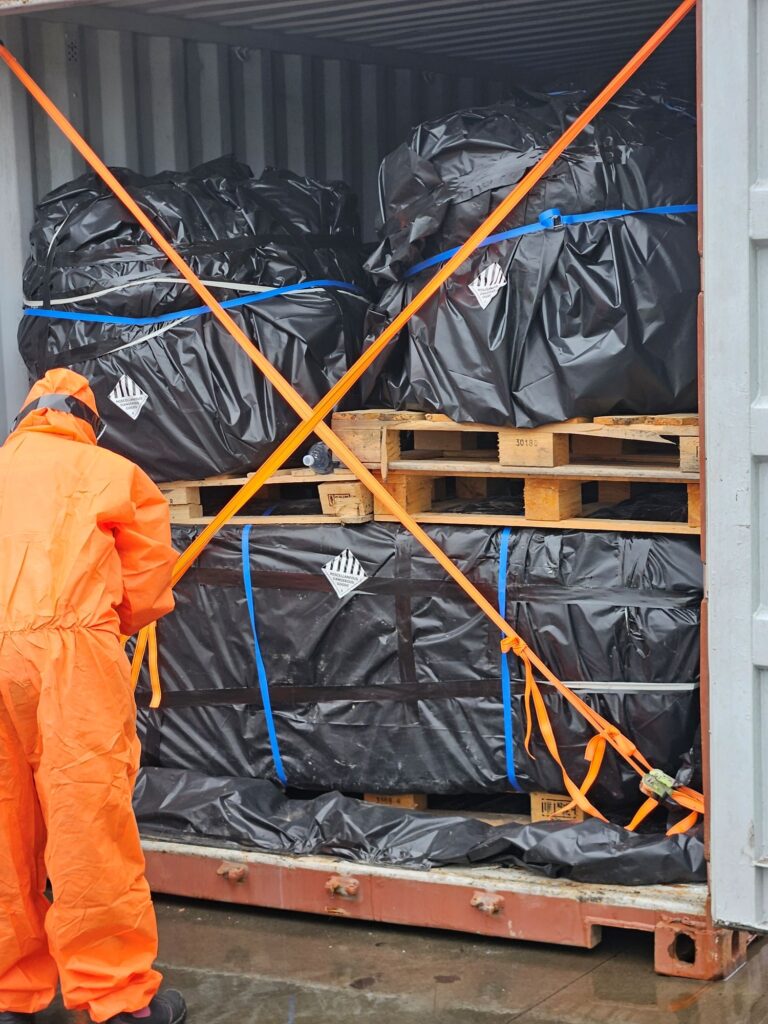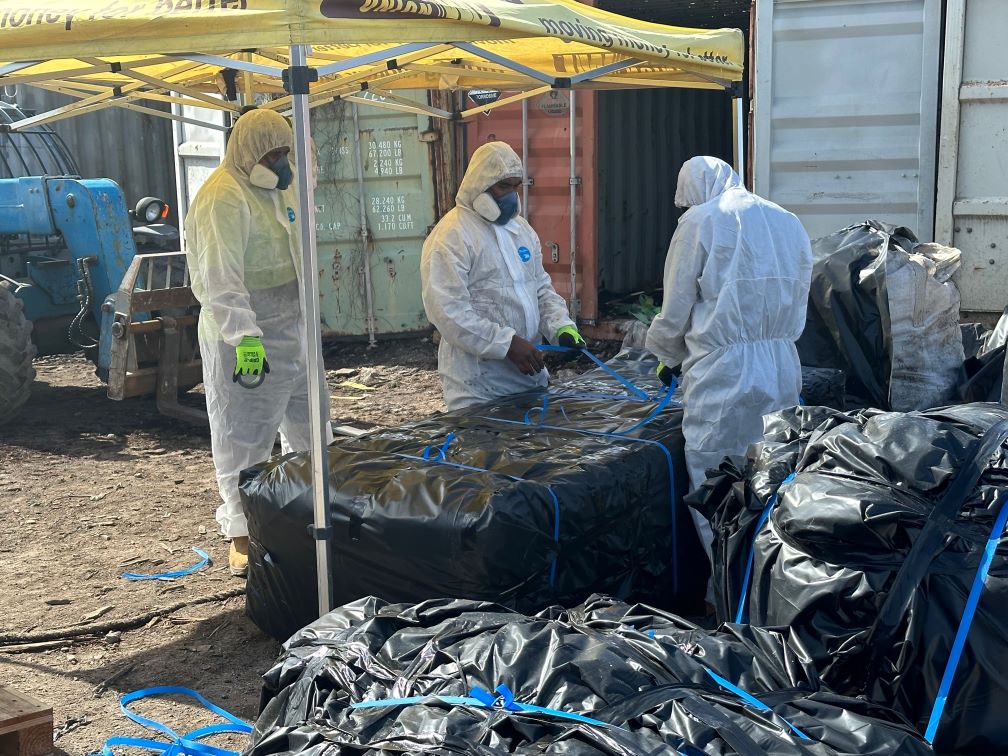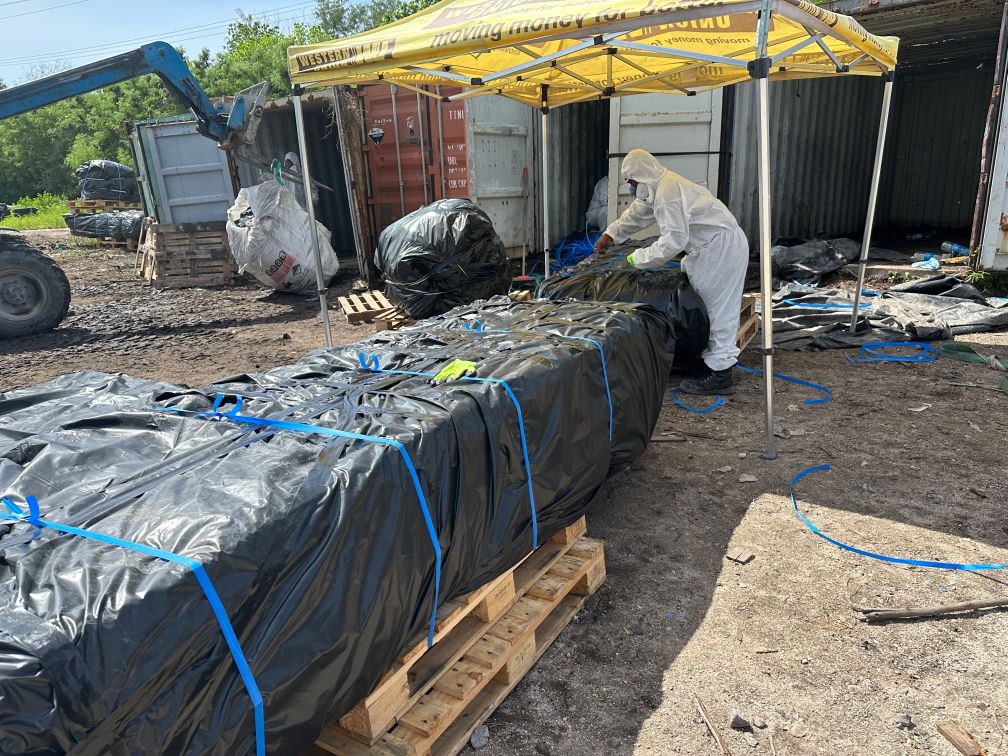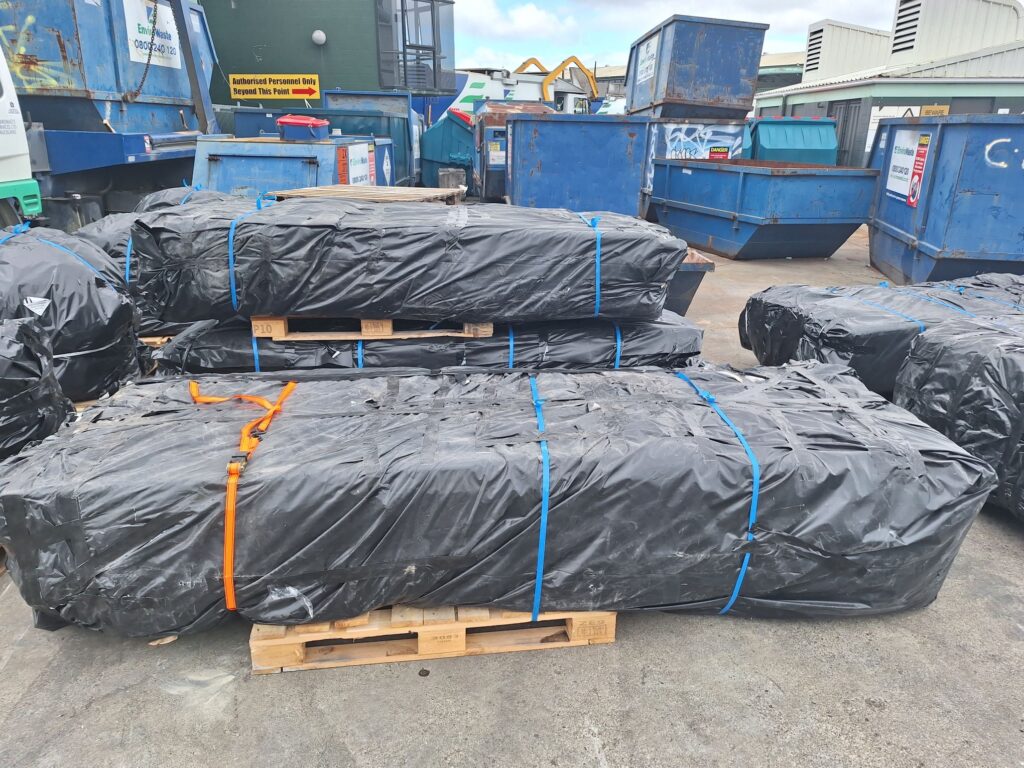News - Mar 29, 2024 Nauru Removes Stockpiled Asbestos-Containing Materials from the Landfill

Stockpiles of asbestos-containing materials (ACM) have been safely removed from the Nauru landfill in a recent asbestos abatement activity funded by the European Union-funded PacWastePlus Programme. The cleanup effort involved safely repacking and transporting the hazardous material to a designated disposal facility in New Zealand.
The removal of the ACM has eliminated a potential health hazard for the local community and marks a significant milestone in hazardous waste management in Nauru. Training to the standards set in the Draft Nauru Asbestos Management Code of Practice (equivalent to AUS/NZ standard CPCCDE3014A) was provided to 52 local staff involved in the abatement efforts, along with the provision of personal protective equipment.

The abatement crew acknowledged the information learned during the workshop as valuable. “I never thought that it could be done that way, and I came to know, and seeing what was done, that people would know about asbestos-containing materials and that they should be taken seriously, but it is also not a product to fear if you wear proper protective equipment and dispose of it properly and do not disturb it”, said Ms. Delvina Thoma, Supervisor, NCR Waste Dumpsite.
“The provision of this abatement training as part of this removal works was important, as new members of the waste unit need to be trained on how to do the abatement work, as well as learn how to monitor and manage this issue, as our people need to be educated on how to safely manage ACM. We hope PacWastePlus can offer similar training opportunities in future” said Mr Bryan Starr, Director of Environment.
“I would like to see the Draft Asbestos Code of Practice work taken up under the Act, so that any future ACM abatement work will follow that code, and ensure proper monitoring occurs as well.”

The deteriorating containers housing the ACM were opened, and the stored ACM waste was removed and double-wrapped, put on certified pallets, double-wrapped again with 200-micron plastic, and secured to the pallets using a nylon strapping machine.
The material was then transferred into new seaworthy containers and sealed. The old containers were vacuumed clean, wet wiped, and closed to ensure no ACM waste remained. Continuous air monitoring and sampling were conducted throughout the project to safeguard the safety of workers and others near the site.


